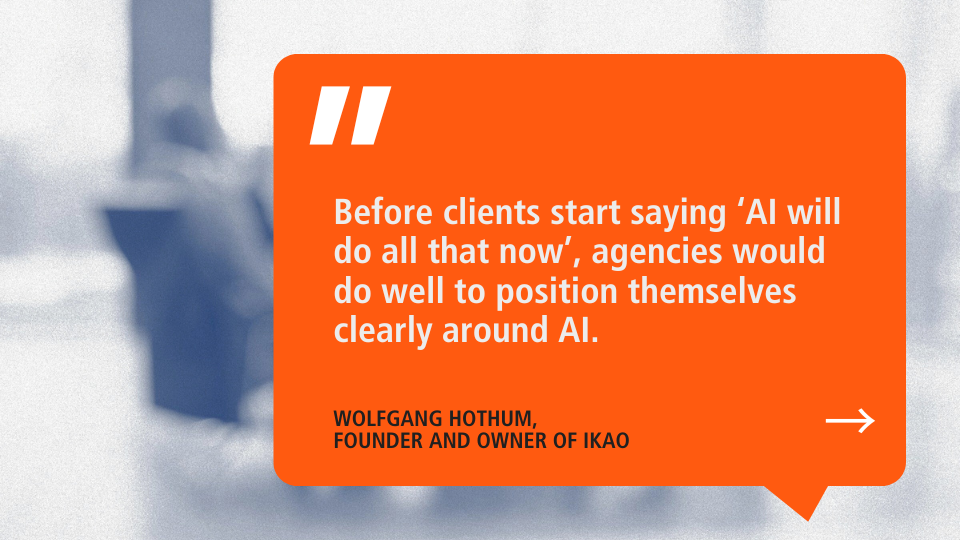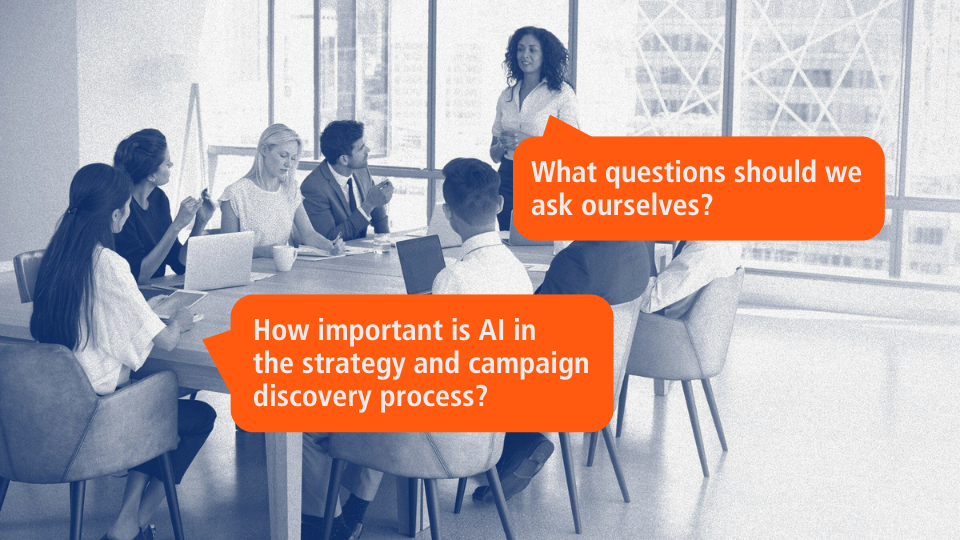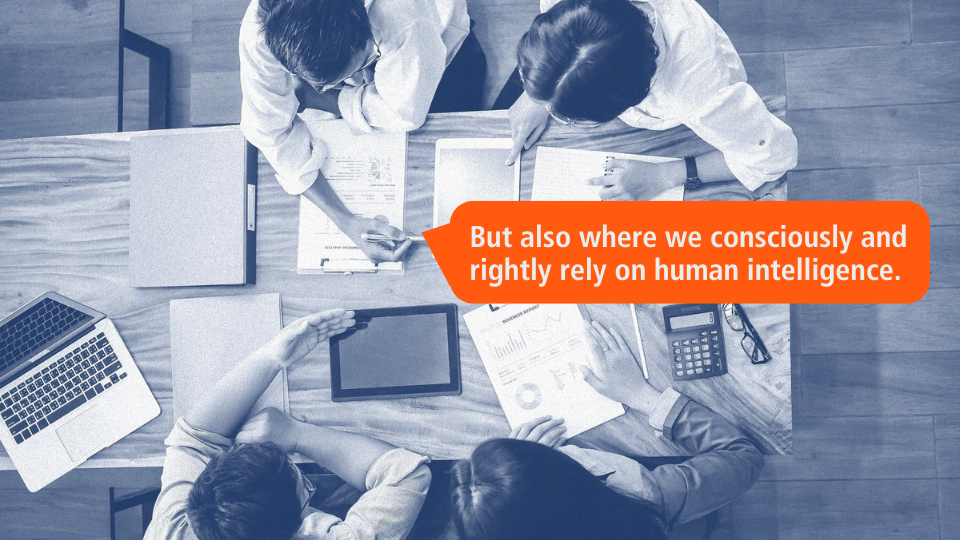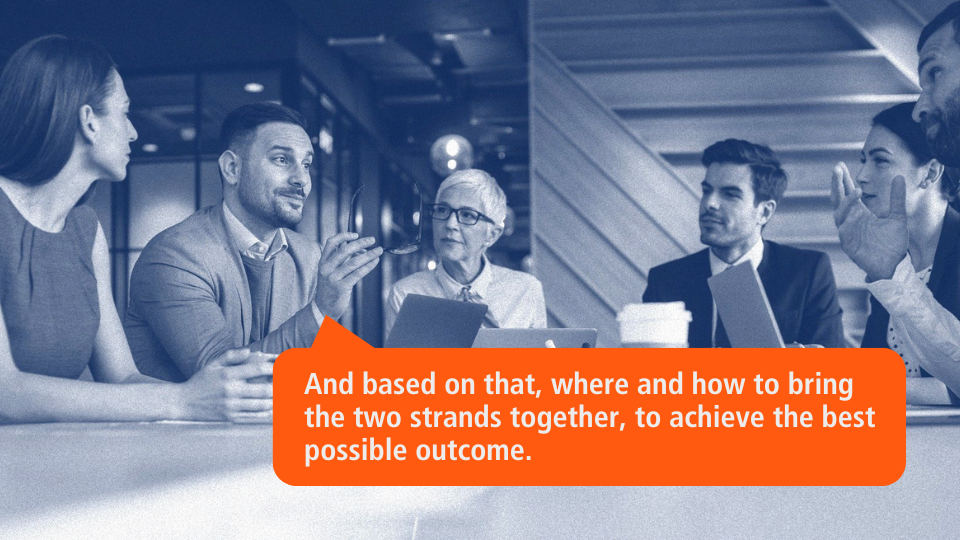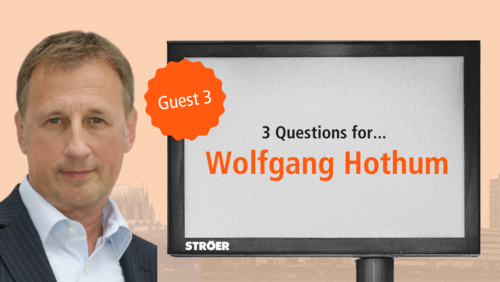
12. February 2025
Wolfgang Hothum on info essences and the positioning of agencies on AI
How do you create advertising that not only stands out, but is also remembered? This question is at the heart of our blog series on the creative design of (D)OOH motifs and commercials. For this article, we have enlisted the help of an expert who has been putting (D)OOH creations through their paces for more than 10 years.
Wolfgang Hothum, founder and owner of the Institute for Communication Analysis and Optimisation (IKAO), helps companies analyse and strategically optimise campaigns based on data. In this interview, he talks about his experiences and provides valuable insights into what often causes creations to fail in practice – and how creatives can avoid it.
Question One
How do you see (D)OOH creations evolving in 2024 against the backdrop of an ever-changing media landscape?
In what I see as an increasingly fragmented media landscape, out-of-home has long since moved from “communicative marginalisation” to a media channel of central strategic importance. Its strength lies in its constructive inevitability – an advantage that no other form of media offers. DOOH advertising has proven to be a driving force in this development and it is foreseeable that its importance will continue to grow in the coming years. The only fly in the ointment for me, however, is that the quality of the creations is still too often only partially convincing, and we still have to deny their suitability for posters far too often when analysing motifs.
For whatever reason, this is all too often forgotten: No other advertising medium has a greater obligation to convey information than the poster. It also has to be striking and memorable, because in the public space it has to stand out against a multitude of environmental stimuli. The aim is to penetrate the inner field of consciousness within a few moments and create an incentive to engage.
In order to avoid “long searches” between the active elements used, image and text information must be combined into units of meaning. However, this basic requirement is not or only partially met by two thirds of the motifs. In addition, there is often the problem of too much information. Three out of four people need more than three seconds to absorb and decode the primary messages – and human perception does not have this much time for the first relevance check.
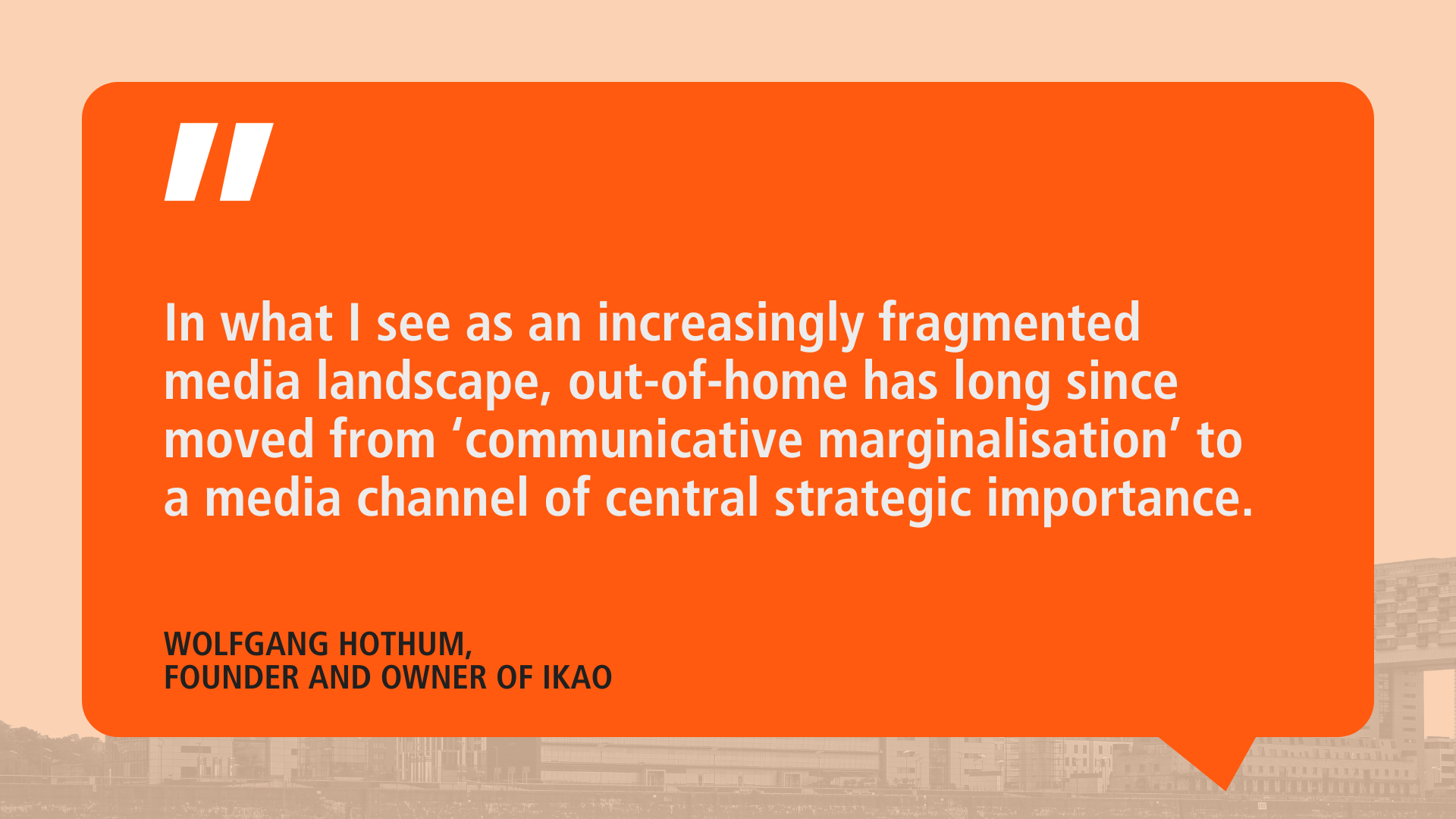
Question Two
Against this background, what are the most important elements that make a (D)OOH campaign successful?
Attract your gaze, hold your gaze and fix what you see in your mind's eye. To achieve this, three things need to be considered:
- First, the visual anchor quality of the images and clips must be right to break through the visual background noise that is always present in out-of-home. This is why it is important to think in terms of “big pictures”, i.e. hyperlinks. The fact is that the risk of cannibalisation increases with the number of effective elements used. The resulting fragmentation is also the greatest enemy of lasting impact.
- Secondly, according to the three-part human perception scheme (skimming, scanning, fixating), what is initially perceived implicitly must trigger a motivation to engage in order to enter the mode of conscious perception, i.e. fixation. Many motifs and clips still get stuck at this threshold. In other words, they are simply faded out by the subconscious and, despite their size, are simply overlooked.
- Thirdly, it is important to minimise the information load as much as possible and to keep an eye not only on the media channel, but also on the respective formats and reception situations. So much more would be possible if brands and agencies did not see an appropriately split motif mix as more effort, but as more visibility and impact.
Question Three
How do you see the role of AI in the creative design of (D)OOH campaigns and how should creatives position themselves in this context in the future?
In the field of advertising communication, I see AI primarily as an exciting tool that shows creatives new possibilities and gives them access to them, but they shouldn't get lost on these levels. Because it has to be clear that AI is no substitute for a strategically anchored idea – and whether it will ever manage to play anything like a significant role remains to be seen. In any case, we are currently finding in our motif and media measurements that AI-based implementations are often still quite flawed at both the implicit and explicit signal levels, and that this is clearly reflected in the results. We have often had to point out to euphoric clients in comments that their AI-based concepts have lost ground compared to previous campaigns. Of course, this is only a snapshot in time in the context of rapid development. But when I see that things are suddenly reappearing on the image and text level that deserve nothing more than the status of comprehension or reading barrier, then I can only share the AI euphoria to a very limited extent at the moment.
Before clients start saying “AI will do all that now”, agencies would do well to position themselves clearly around AI. In other words, where do they place it in the strategy and campaign development process? In what areas do they consciously and justifiably rely on human intelligence, and where and how do they intend to bring the two together to achieve the best possible outcome? This positioning with regard to AI needs to be updated at regular intervals and adapted to the current capabilities of AI.
Creative people should see AI as a turbocharger for their ideas, but keep the creative reins in their own hands. By the way, I like the comic duo Daniel Gyro Gearloose and Little Helper as a translation. As we all know, the little light bulb has had a mega-micro-electronic brain with an artificial intelligence module (KIM) and a spontaneous emotion accumulator (Spa) since 1956. The lightning-quick brain also often has the phrase “Now I must quickly help my master out of a jam” in its speech bubble. And that's exactly what she did. All joking aside, if creative people see themselves as the future masters and AI as their highly developed helpers, then nothing can go wrong on the road to the creative future.
Wolfgang Hothum has shown us what creations need to do to break through the noise of the public sphere and reach people - and what questions agencies need to ask themselves to avoid being left behind by artificial intelligence. But what do other experts think about the challenges and opportunities in this field? You can also read our interviews with Thomas Koch and Joachim Netz, who provide further exciting perspectives and valuable tips.
Media content in this blog post was created with the help of AI.



